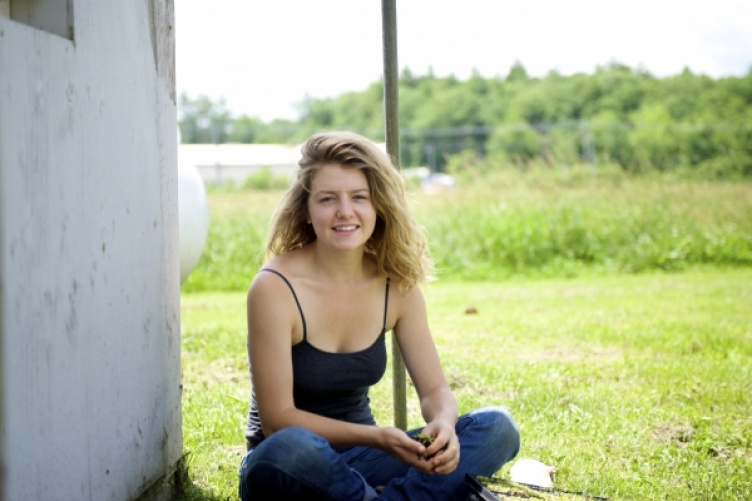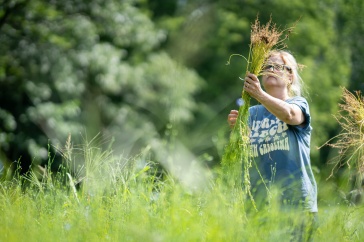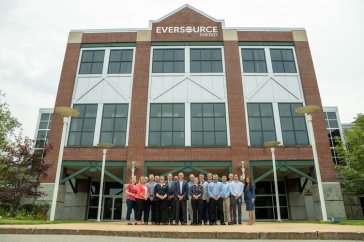
Here’s how you get healthy food to low-income families: help their garden grow. And if the saying holds true that such acts take a village, then meet villager Natalee Stimpson.
Last winter Stimpson '16, a sustainable agriculture and food systems major, volunteered to grow seedlings for the Sycamore Community Garden in Concord, New Hampshire, a 138-plot field whose shareholders are mostly African and Asian refugees. Stimpson learned of the project from Jonathan Ebba, horticulture facility manager at the Thompson School.
Garden organizers had contacted Ebba about the possibility of UNH growing seeds for them. He offered space in the greenhouses and then asked Stimpson if she would volunteer to do the actual planting and tending of the seedlings. That meant starting with teeny little seeds grown in cells before transplanting them to other containers until they were big enough to take hold in the ground.
“I’d definitely gotten my hands dirty before,” says Stimpson, who has worked at the greenhouses since she was a freshman. What’s more, her father was a farmer when she was young. “That was a significant part of my life,” she says.
Yet when she arrived at UNH, she had no intentions of making that past her future. [Natalee Stimpson with seeds]
“I didn’t come to UNH with an outline,” she says. “Then, during the second semester of my freshman year, I walked into my first open house at the greenhouses. The minute I smelled that smell again, I knew.”
The Rochester, New Hampshire, resident has been in with both feet ever since. In addition to her job at the greenhouses, Stimpson assists Cooperative Extension specialist and New Hampshire Agricultural Experiment Station researcher Becky Sideman with her research.
“I love sitting in a field with Becky talking about how she wants to lay it out,” Stimpson says.
During this year’s January term, Stimpson took the course “Agriculture and Development in the Neotropics” and spent three weeks in Costa Rica studying tropical agriculture and ecology. One of the discussion groups was on ethnobotany. For Stimpson, participating in those conversations was like smelling the fresh soil in that greenhouse three years earlier.
“It really spoke to me. I’d never thought about the relationship between people and plants in a scientific way,” she says. “I’ve always been interested in the medical use of plants but there has been a disconnect in my life. I want to work to bridge that gap.” To that end, Stimpson now plans on making ethnobotany the emphasis of her major.
Growing the seedlings for the community garden was a new experience. It was mid-semester of the second term. Stimpson was in the middle of projects and papers; she had her greenhouse job and a waitressing job, in addition to attending classes and studying.
“It was a little stressful. I spent some late nights in the greenhouses,” she says. “But knowing how many people were going to have fresh vegetables to eat, and know where their food was coming from, made it worth it.”
It took a little while to figure out the germination period. Stimpson started the eggplants (African and Asian varieties) and peppers first, followed by the okra and tomatoes in early April and then squash, cucumbers and cabbage a few weeks later.
At the end of May, Ebba, Julie Barber (a horticultural major) and Stimpson delivered more than 5,000 seedlings to the community garden. Each plot tender received a six-pack of each vegetable.
“Any other time I’ve grown things, I’ve seen it all the way through. Growing plants to give away so people have food is a different feeling,” Stimpson says. “A good one.”
-
Written By:
Jody Record ’95 | Communications and Public Affairs | jody.record@unh.edu



















































